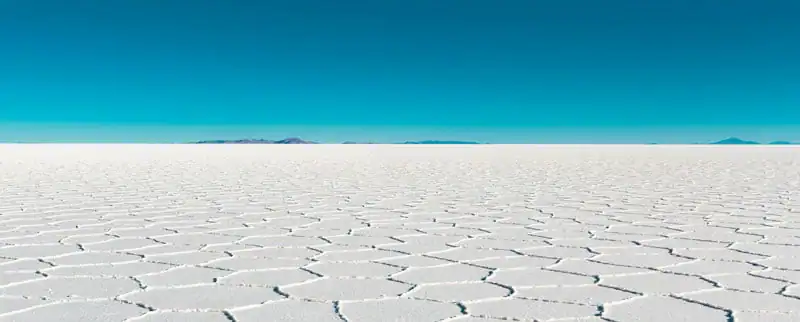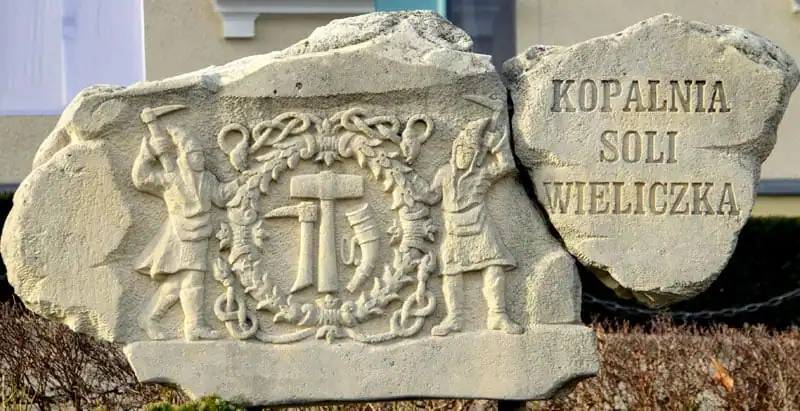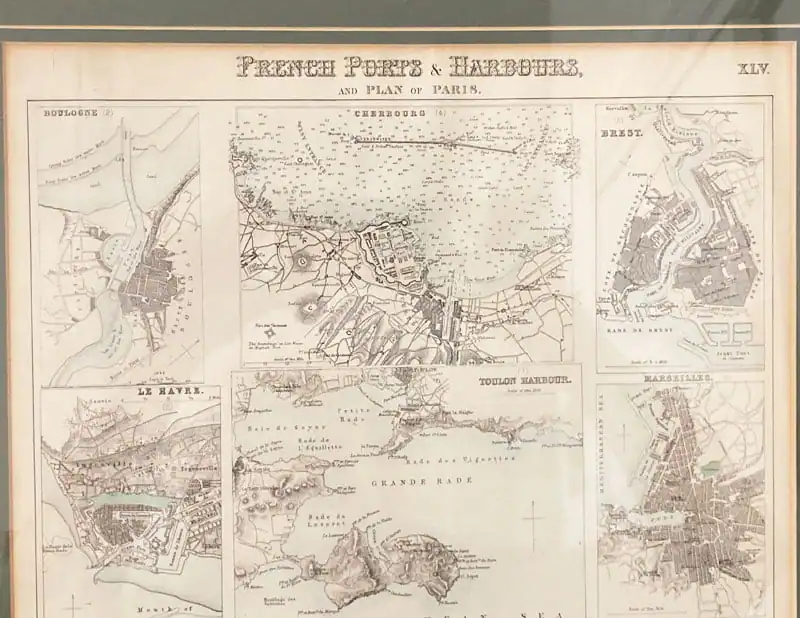Salt has played a crucial role in human history, and its importance extends far beyond seasoning food. Here are some interesting highlights about the role of Salt in history. I’ve tried to track down scientific and cohesively written source material for this history of salt information and have linked them so that you can read more about these fascinating topics!
Salt as Currency
The word “salary” comes from the same root word as the word “salt”: the Latin word for salt was “sal”. The word “salarium” meant an allowance or stipend, which was the money paid to Roman soldiers intended for the purchase of salt (and presumably other items they needed).
Throughout much of ancient times, salt was a high-value and portable but heavy commodity. Not only was it desirable for human consumption, it allowed people to preserve food because it is anti-bacterial and was good at extracting the moisture from foodstuffs like fish and meats. In fact, it allowed transport and trading of the preserved food – such as salted fish. People also learned to use salt in pickling – or preserving by immersing food like vegetables in salt brine.
There are many examples in the historic record of salt being a trade commodity that could be readily exchanged. For example, in Ethiopia, there were uniformly sized bars of salt called “Amole” that were used as currency. There are records going back to around 525 B.C.E. of the salt bars being used in this manner. The blocks of salt shown in museum pictures are about 12 inches long, 4 inches wide and 2.5 inches thick. To keep them from breaking, they were often wrapped on the long direction with some type of reed-like plant material. Then the blocks were often loaded onto the backs of camels to transport them.
Some of these ancient Amole have been found and are on display in museums. The Money Museum has an excellent photo of one that is in their collection.
Salt was a Major Trading Commodity
In history, even going back to prehistoric times, salt was an important trade good. Since the supply of salt was often near the ocean, “salt roads” or salt trade routes developed to transport salt to inland and mountainous areas that had few to no salt sources. An example includes an ancient road in Italy, built by the Romans that was called the Via Salaria. It ran from Rome to Porto d’Ascoli on the Adriatic coast – a distance of about 150 miles.
In countries like France that had navigable waterways and inland ports, the salt would be transported from regions like the Camargue via boat as far inland as possible. Then salt continue to be moved and traded inland, packed on horses, wagons or other methods. More examples of salt trade routes can be found listed in the Salt Road Wiki.
Salt as a Board Game Commodity
Like silk or spices or precious metals and gemstone, salt was one of the important trading goods in early times. That is why it’s no surprise that you can see that reflected in modern Board Games. Some of the games mentioned include ‘Advanced Civilization’, ‘Genoa’ and ‘Nauticus’. If you’re a (fellow) board gamer and would like to see the entire list of game name responses, see the BGG forum entry “Any Games with Salt as a Resource”.

Locating New Salt Deposits was Momentous
Since salt was so valuable, it was really a momentous occasion when a unknown source of salt was found inland, far from any oceans. There are very large salt deposits on the globe that were formed over geologic time scales when ocean water was trapped by shifts in the land through continental drift and uplifts. The Great Salt Lake in Utah and the Dead Sea in on the border of Israel are examples of this, where the water has not completely evaporated yet.
One of my favorite stories though, is on the discovery of The Khewra Salt Mines in Pakistan. They were said to be discovered in 326 B.C.E. by Alexander the Great. Actually, a more plausible description of what may have happened was that Alexander was moving his army through Khewra, and his horse and his soldier’s horses started licking the ground. Thus the army was alerted to the fact that they were crossing over a salt deposit. It turned out to be a VERY LARGE salt deposit: the total amount of salt at Khewra is estimated to be in excess of 6 billion tons. Only a small fraction of that salt has been mined so far.
The Khewra mine in Pakistan is the source of pink Himalayan salt. Salt products from this mine that have been discussed on this website include Himalayan Pink Salt, Himalayan Salt Lamps, and Himalayan Salt Block for Cooking. To learn why the salt in this mine tends to be pink, see Why Is Himalayan Pink Salt Pink: Exploring The Exotic.
Salt Was a Form of Wealth in the Ancient World
In ancient times, those who controlled the salt sometimes became very wealthy. One of the richest men on earth in history was considered to be Mansa Mūsā I of Mali. A ‘mansa’ was the name for king, and in the 14th-century the Mali empire reached the height of it’s strength and influence. Mūsā I came into power in 1312 C.E., controlling significant reserves of salt and gold. Mali included the city Timbuktu, a major center of trade, which is located near the Niger river.
Later in his life, Musa I made a pilgrimage to Mecca (a Hajj), and made quite a spectacle of the journey, bringing along a huge group of support staff and retainers. He gave away gold to those that he met along the way, spurring later explorers to search for the city of Timbuktu, trying to find the source of the Mansa’s wealth. There are no indications that he also gave away salt, although it was certainly a valuable trade commodity at the time. This National Geographic article can tell you more about Mali’s mansas.

Salt: Worth It’s Weight in Gold?
There is a story that repeatedly circulates in many Internet articles about how in certain situations, salt was literally worth it’s weight in gold. I tried to track down actual research from historians to support this claim. I would direct you to this article in World History Encyclopedia for a fascinating read with references that details how valuable salt was to isolated populations.
The special circumstances around salt being exchanged for an equal weight of gold occurred in sub-Saharan Africa. Writings of Arab travelers from the 10th century C.E. detail the process by which the people of the Sudan who lived in Ghana would trade for salt. This group had gold dust available, but had inadequate sources of salt. Traders from the north who transported salt from the Sahara desert were richly rewarded for hauling in their heavy loads.
The article also details the salt trade between Timbuktu to Djenne (a.k.a. Jenne). Tariffs on salt were often assessed by rulers in these areas – another way of making money on the movement of salt is it passed territorial borders.
Salt Monopoly in China
Speaking of tariffs, starting in the Tang Dynasty (618 to 907 C.E.) the government started monopolizing salt and the tariffs/duties collected accounted for more than half of the government revenue. Eventually that revenue percentage approached 80%. To this day, salt in China remains in the control of a state-owned enterprise called China National Salt Industry Corporation (or China Salt for short) and the price of salt remains elevated. Attempts to get around salt regulations in China result in fines and having salt products seized.
Since salt was an essential and irreplaceable commodity used in everyday life, and therefore was viable as a stable source of government revenue, various historical rulers employed a salt monopoly which forbade the production and sales of salt by commoners.
From: Wikipedia for China National Salt Industry Corporation.
Salt Tax in France – Among the Causes of the French Revolution
Tariffs on salt have been around for a long time – and many instances of irritation caused by salt taxes can be found in the history of salt.
Different dates are cited for the creation of a tax on Salt in France. Many sources on the web incorrectly attribute this to Louis XIV (who came to power in 1643). However, the tax, known as the gabelle, originated sometime in the 14th century. Various kings, including “the Sun King” adjusted the rate and rules around the tax over the years.
Understandably, a tax on a vital dietary item was hated, but inconsistencies over how the tax was implemented fomented discontent with the government. The gabelle was sometimes 10 to 20 times higher in and around Paris than it was in provinces to the south or east. It is estimated that the duty on salt alone generated up to 10% of the government’s revenue from taxes.
Salt was only sold in government controlled stores, and there were rules about how much you had to buy at a time. As a peasant, this made obtaining salt very difficult. Trying to smuggle salt in France or otherwise avoid the tax could get you thrown in prison or even executed.
The gabelle’s unpopularity was forcefully expressed in the lists of grievances drawn up for the Estates-General of 1789 on the eve of the revolution.
From: Britannica
Salt in Ancient Egypt: From Mummies to Mouthwash
Natron is a naturally occuring mixture of salts that are most commonly found in African lake beds. Known deposits are located in Lake Magadi, Kenya, and in Lake Natron, Tanzania, for example. The ancient Egyptians took note of this substance because it was a natural drying agent – one of their primary uses for it was to preserve dead bodies.
The embalmers next removed all moisture from the body. This they did by covering the body with natron, a type of salt which has great drying properties, and by placing additional natron packets inside the body. When the body had dried out completely, embalmers removed the internal packets and lightly washed the natron off the body. The result was a very dried-out but recognizable human form. To make the mummy seem even more life-like, sunken areas of the body were filled out with linen and other materials and false eyes were added.
From: Smithsonian Institute
Natron is a mixture of sodium carbonate decahydrate (a kind of soda ash) and around 17% sodium bicarbonate (baking soda) along with small quantities of sodium chloride (common rock salt) and sodium sulfate. For more information about salt and salts, you may be interested in What Is Salt?.
In addition to preserving bodies, the salt mixture has been used for thousands of years as a cleaning product and was blended with oil to form an early form of soap. Other interesting uses:
- Used directly on teeth as a cleanser, and dissolved in water for a mouthwash
- Used as a bleaching agent for clothing
- Used in processing/curing leather
- Used as an ingredient in antiseptics for wounds
- Used to dry and preserve meat and fish
Largest Salt Mine on the Planet
The largest known salt deposit on the globe is in a odd place: 1800 feet UNDER Lake Huron, in Ontario, Canada. I wish I knew the story of how they figured out it was there! The mine is called the Sifto Salt Mine and has been in continuous operation since 1959. Much of the salt produced at this mine goes into road maintenance in the winter (deicing) and supplying industrial uses of salt.
There is a town underneath the lake that services the mine operations – and contains over 100 miles of roadways! The roads are big enough for 40 ton dump trucks to drive on. Getting those trucks down to the mine is an ordeal: the trucks are stripped down to their frames, all the parts are lowered into the underground town, and then the trucks are reassembled. I couldn’t find out anything about how they keep the water out of the town and how they pipe breathable air into it, but I guess mining engineers figured out functional and reliable methods to make it all work.

Oldest Salt Mine on the Planet
It’s not a surprise that early humans made good use of salt deposits when they were found naturally occuring in the form of salt flats or salty inland lakes. I find it interesting that humans were enterprising enough and that salt was valuable enough that people started locating and mining underground salt early on.
The history of salt would not be complete without considering where the first salt mine might have been. There are several places that bill themselves as the oldest salt mine. Here are some contenders:
- The Zipaquira salt mines in Columbia have been in use since 5th century BC (500 B.C.E.)
- Scientists date rock salt mining activity in Duzdagi, Azerbaijan to 5000 B.C.E.
- The prehistoric complex of Solnitsata, is located near the modern town of Provadia, Bulgaria. This salt production center is estimated to date to 5500 B.C.E. and was most active from 4700 to 4200 B.C.E. according to an article in the scientific journal, Méditerranée.
Radioactive Salt
After the Asse Salt Mine in Germany was decommissioned for salt extraction, officials thought that the mine would be a great place to store low- and medium-grade radioactive waste. However, groundwater eventually leaked into the caverns, corroding the barrels with rust and causing radioactive leakage into the water.
Oddly enough, even though local authorities thought that this was bad enough that they started to slowly remove the barrels of waste, the mine was open for tours. Right now, their website says “visitor tours of the mine are booked up for the foreseeable future”. If you think it would be interesting to go look at radioactive salt in a slowly disintegrating salt mine, here is a link to the Asse information centre website. There is a Virtual tour that you can use to remotely and safely explore the mine on that page.
Sources Used for History of Salt
Here are some in-depth and wide ranging articles covering many history of salt topics that I referenced while preparing the “Salt Highlight Reel”. If you are seeking more salty information to amaze your friends at parties, or if you are cramming for your “Jeopardy” debut, these may be of interest.
- University of Hawaii article, “Compare-Contrast-Connect: The Role of Salt in Human History”
- Natural Library of Medicine, “Sodium Chloride in Food”
- Largest Salt Mines
Photo credits: Bolivian Salt Flats photo by Leonardo Rossatti. Pakistan Fort & camels photo by Syed Hasan Mehdi. Salt mine sign photo by Marcin Manka.
The featured photo for this history of salt article is of a 1872 French Ports & Harbours map from my own collection. My map is a page from an old map book that I bought years ago, but as it turns out there are replicas of this same map available on Amazon that have much nicer colors because they look to be copied from the original map.
This replica map shows the vibrant colors from the original map. In addition to five ports and harbours, the bottom half of the replica shows Paris as it existed in 1872 in fascinating detail.
Final Thoughts
If you enjoyed these brief salt anecdotes and would like to know more about the History of Salt, you might want to take a look at this book: “Salt: A World History” by Mark Kurlansky.
If you just can't get enough Salt (history), I recommend this book as a fascinating read.
I particularly liked his story in the book’s introduction where the author describes the “magical stone” that he found during his youth and how it taught him about the power and subtleties of salt.







